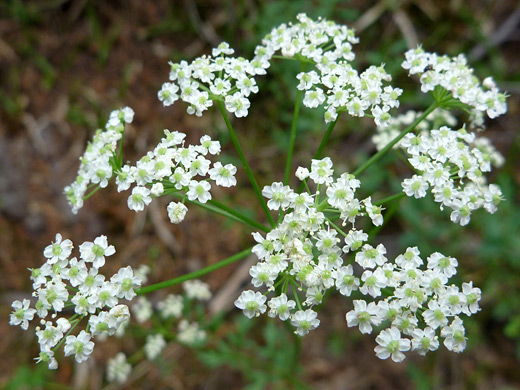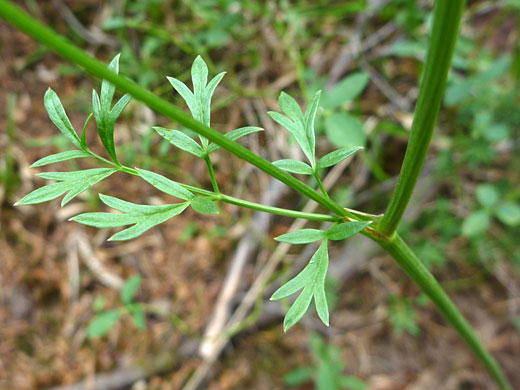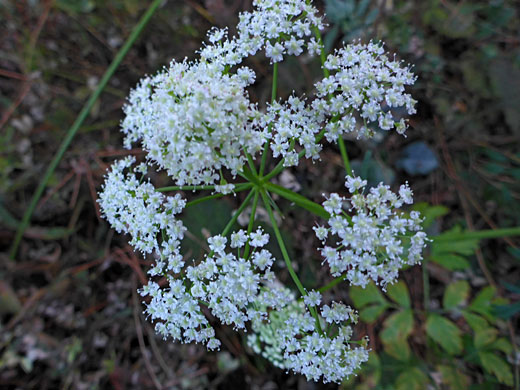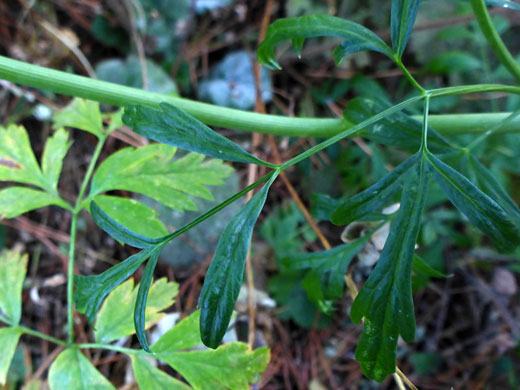Common name:
Gray's lovage
Family:
Scientific name:
Ligusticum grayi
Main flower color:
Range:
The Pacific Northwest, and adjacent areas
Height:
Up to 30 inches
Habitat:
Moist meadows, damp forests; between 3,500 and 10,500 feet
Leaves:
Pinnately divided into narrow, lobed segments. Blade up to 10 inches long
Season:
June to September
Leaves of ligusticum grayi grow mainly at the base, and are divided two or three times into narrow, lobed leaflets, which have pointed tips. Plants usually have a single stem leaf, at the point where the stem branches; this has fewer, narrower segments and is much shorter, but shows a similar pattern of division. Leaves, stem and inflorescence are hairless.
Like most apiaceae species the plant produces a compound umbel of tiny flowers, each formed of five white petals around a greenish pistil and five protruding white stamens. Petals have a notch at the tip and a groove down the middle. The 5 to 18 rays are unequal in length (varying between 0.5 and 2 inches), as are the pedicels supporting the individual flowers. There are no leafy bracts at the base of the inflorescence.
Like most apiaceae species the plant produces a compound umbel of tiny flowers, each formed of five white petals around a greenish pistil and five protruding white stamens. Petals have a notch at the tip and a groove down the middle. The 5 to 18 rays are unequal in length (varying between 0.5 and 2 inches), as are the pedicels supporting the individual flowers. There are no leafy bracts at the base of the inflorescence.
All Contents © Copyright The American Southwest | Comments and Questions | Contribute | Site Map






